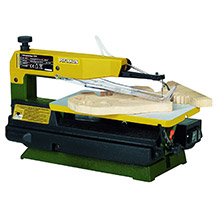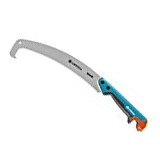Table saw purchasing advice: how to choose the right product
- What you need to know
- Circular table saws are available in different designs and price ranges for DIY enthusiasts and professionals.
- Circular table saws can be used with different circular saw blades for processing wood, wood materials, plastics, metal and ceramics.
- A circular table saw can be used to cut large-format panels, mouldings, boards and beams to the desired size faster and more precisely than with a hand-held circular saw or jigsaw.
What is a table saw?
A circular table saw is a stationary sawing machine. In principle, circular table saws always consist of three parts: a machine body, a work table and a circular saw blade that is driven by an electric motor. Depending on how the circular table saw works, the workpiece is pushed over the rotating saw blade for sawing, or the saw blade is pulled through the workpiece. The teeth of the saw blade, which are visible above the worktable, move in the direction of the user. This means that a certain amount of pressure must always be applied when sawing. This has the advantage that the workpiece cannot be easily flung away.
Table circular saws can be used for processing different materials. Their main field of application is the processing of wood and wood materials. They are part of the basic equipment of every carpenter’s and joiner’s workshop and are now also frequently found in the hobby cellar. Depending on the saw blade, circular table saws can also be used to cut plastic sheets, for example acrylic sheets and light metal sheets made of aluminium, or to cut ceramic tiles.
The different types of circular table saws
Circular table saws come in three different basic models. These three are:
- Standard table circular saw
- Underfloor pull-out circular saw
- Sizing circular saws
Standard table circular saws
When people talk about a table saw, they are usually referring to this type of table saw. In standard table saws, the drive motor with the saw blade and the work table are firmly connected to a machine body. When sawing, the workpiece is pushed over the work table and the saw blade. The so-called construction circular saws also belong to this type of table circular saws. Standard models are relatively inexpensive and are therefore preferred for hobby use. They are offered with different table sizes and saw blade diameters. With some models, the size of the work table can be expanded with accessories. A base is also available, which allows the machine to be placed on the floor and used. However, the machining possibilities are limited: standard table circular saws are suitable for simple work such as cutting boards or beams to length.
Pro points
- Low price
- Low weight
- Suitable for hobby workshops
Drawbacks
- Only suitable for simple work
- Limited machining possibilities
- Accessories often expensive
Underfloor pull circular saws
Table circular saws with the somewhat bulky name underfloor pull circular saw function differently than standard table circular saws. On these machines, the machine table is firmly attached to the machine body. The motor with the circular saw blade can be moved under the work table. For this purpose, these circular table saws have a bar that protrudes from the front of the machine. For sawing, the workpiece is clamped to the work table on these models. Then the saw blade can be pulled through the workpiece. The advantage of these machines is the precise saw cuts that can be made with them. The disadvantage is that the cutting length is limited by the length of the guide rails for the saw motor. Depending on the manufacturer, underfloor circular saws can be retrofitted with an underframe and other accessories. These machines owe their name to the fact that the motor with the saw blade is mounted under the work table.
Underfloor pull circular saws are suitable for hobby craftsmen and professional use. However, they are usually only used for processing wood and wood materials. Metals or ceramic materials can only be poorly processed with these machines.
Pro points
- Simple operation
- Precise cuts on wood and wood-based materials
Drawbacks
- Not suitable for large workpieces
- Not suitable for metal or ceramics
- Relatively high price level
Sizing saws
Sizing saws are the royal class among table saws. They are an important part of the equipment in every joinery and carpentry workshop. In a sliding table saw, the motor with the saw blade is fixed and immovable to the machine body. The work table, on the other hand, can be moved. For sawing, the workpieces are placed on the work table and the work table together with the workpiece is guided over the rotating saw blade. The name sliding table saw comes from the fact that this type of table saw is used to saw large-sized panels of wood or wood-based materials into smaller shapes. The main field of application for these circular table saws is furniture making. With sliding table saws, doors, side panels or back panels of furniture can be quickly and easily sawn with absolute precision and, if necessary, at right angles. Sizing saws are more suitable for professional use than for the hobby workshop.
Pro points
- Precise machining of large workpieces
- Large worktable for safe working
- Wide range of accessories (mostly included)
Drawbacks
- High price level
- Large space requirement
What should you look for when buying a circular saw?
When choosing a table saw, you should pay attention to various points. The most important selection criteria for a table saw are:
- Intended use
- Engine power
- Cutting height
- Table size
- Saw blade adjustment
- Speed adjustment
- Accessories
Intended use
First of all, you should consider what work you will use the new circular table saw for. This will determine whether you should choose a conventional table saw, an underfloor pull saw or a sliding table saw. A conventional table saw is suitable for speedy work and making simple saw cuts. An underfloor pull saw is suitable for precise work, both in the hobby room and in the professional sector. This type of table circular saw enables more precise saw cuts. A sliding table saw is always recommended when larger panels need to be cut precisely. Sizing saws are mainly used in furniture making and in joiner’s workshops.
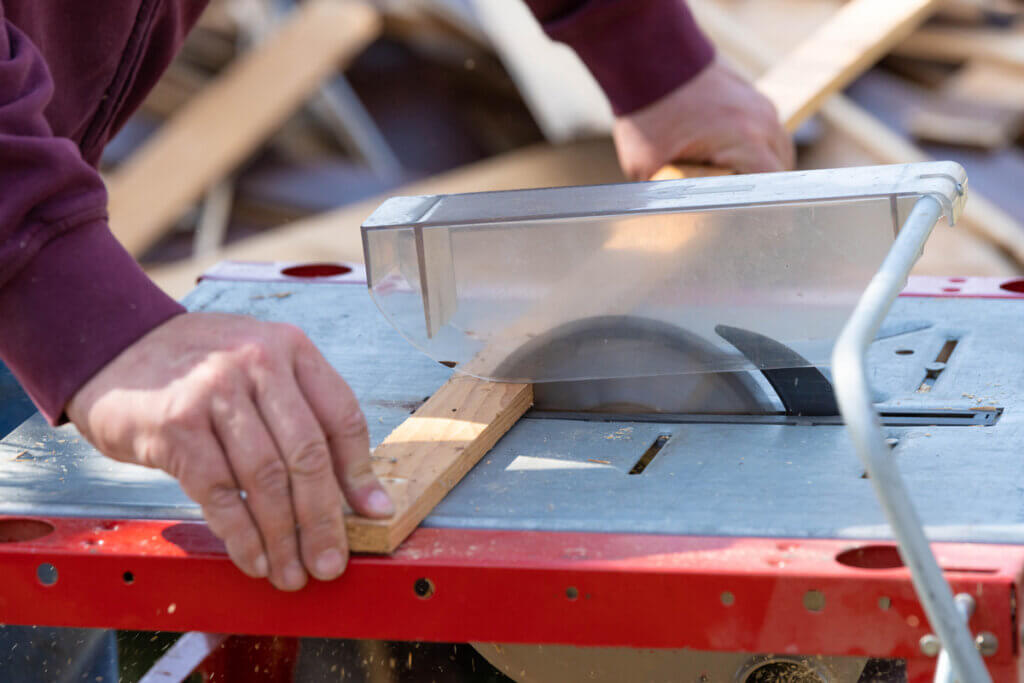
Engine power
The second important selection criterion is the power of the drive motor. The motor power should not be too low, so that speedy work is possible. The higher the motor power, the easier it is to saw hard and thick materials. For hobby use, a circular saw should have a motor power of about 1,500 watts. For ambitious do-it-yourselfers and craftsmen, circular table saws with a motor power of about 2,000 watts are recommended. For professional use and processing thick workpieces, the motor power of the table saw should be from about 2,500 watts upwards.
Cutting height
The cutting height of a table saw determines how thick the workpieces can be. The cutting height corresponds to the part of the saw blade that protrudes above the work table. The greater the cutting height, the larger the saw blade diameter. It should be noted that a larger saw blade requires more motor power.
Table size
The size of the worktable of a circular saw is an important criterion when sawing larger workpieces. The larger the worktable, the larger the support surface for the workpiece. Generally, sliding table saws have the largest work tables; in their case, large-format panels made of wood materials or plastic can be safely placed on top and guided along the saw blade. If, on the other hand, the table saw is only used for simple sawing work, for example for cutting beams or boards to length, the table does not need to be of any particular size.
Saw blade adjustment
If the table saw is to be used to make angled cuts on long edges, it must be possible to tilt the saw blade. On many, but not all, circular table saws, the saw blade can be tilted by up to 45 degrees in at least one direction. This makes it possible to make short and long angled cuts for overlapping skirting boards, for example.
Speed adjustment
For the widest possible range of use, the speed of the saw blade should be adjustable. The speed is the speed at which the teeth of the saw blade cut into the material. The cutting speed is significantly higher for wood materials than for plastics or metals, for example. A speed control that allows the desired speed to be set is optimal; it is best if the set speed is shown on a display.
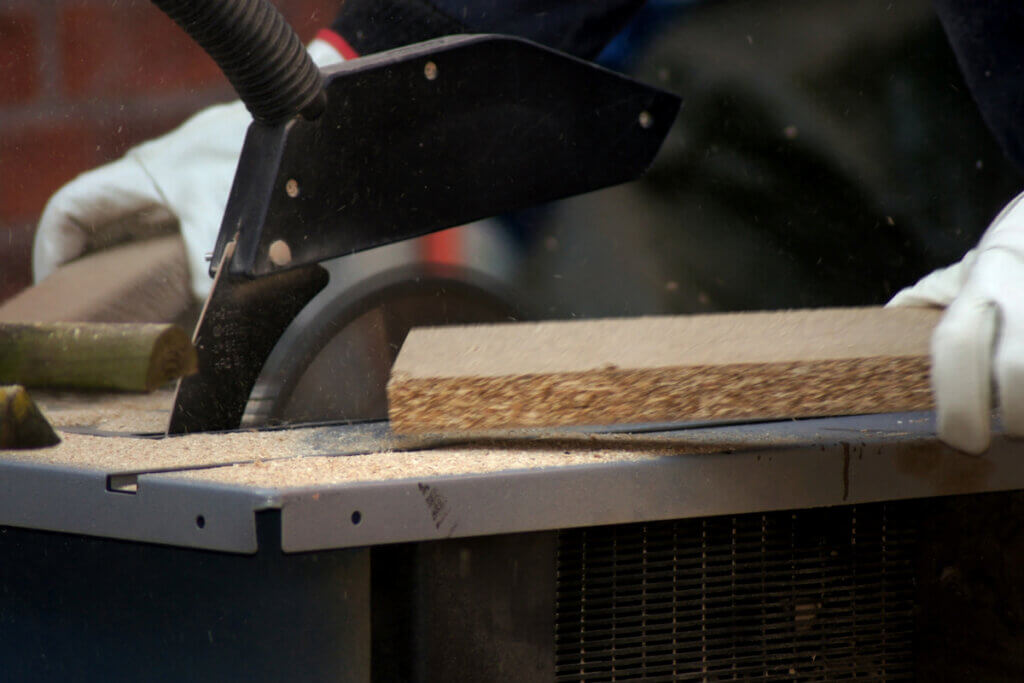
Accessories
Some manufacturers supply their circular saws with a wide range of accessories. These include, for example, an adapter for a dust extraction system, a spare circular saw blade or angular and parallel fences. Depending on which accessories are already included in the scope of delivery, a lot of money can be saved as a result. It is also worth checking whether a table extension can be purchased and fitted later for the selected circular saw.
Tips for maintenance and care of a circular table saw
Circular table saws are usually very robust machines. However, to maintain their performance for many years, they need to be cleaned and serviced regularly. After completing the work, you should thoroughly clean the circular table saw of sawdust and shavings. A simple hand brush, a hoover and, for very fine sawdust, a slightly damp cleaning cloth can be used for this purpose. A hoover is also recommended for cleaning the machine.
When cleaning, do not forget the underside. A lot of sawdust quickly accumulates on the drive motor and in the many corners of the machine. This sawdust attracts moisture so that the machine housing, if it is made of sheet steel, can start to rust.
Before using a circular saw, check that the teeth of the saw blade are still sharp. If the teeth are blunt or broken, the saw blade should be replaced for safety reasons. This check should be carried out repeatedly during work if the machine is used to carry out many sawing operations in succession.
If the circular saw is not going to be used for a long time, it is advisable to rub the bare metal parts with a machine care oil to protect them from rust. This also includes the circular saw blade. Machine parts made of aluminium or painted parts are not affected.
Working safely with a circular saw
A circular saw should always be placed on a level and firm surface. The machine must not wobble or slip when working. It is very important that the mains plug is always pulled out before changing the saw blade and before cleaning, so that the machine cannot be switched on accidentally.
Accessories for circular saws
Most commercially available circular table saws can be retrofitted with various accessories. These include:
- Circular saw blades
- Table extensions
- Guides and stops
- Underframes
- Extraction devices
- Safety goggles and hearing protection
Circular saw blades
Most manufacturers include a circular saw blade in the delivery box. This is usually a so-called universal circular saw blade. “Universal” means that this circular saw blade can be used to saw wood, wood materials and usually also plastics. However, universal also means that the saw blade is not really optimally suited for the different materials. It is better to buy the optimum saw blade for each material. Suitable saw blades for working with wood, wood materials, various plastics, metals and ceramic tiles can be purchased in specialist shops. As a general rule, the thinner the workpieces to be sawn, the greater the number of teeth on the saw blade should be. For cutting thick beams to length, the saw blade only needs to have a few teeth. For this reason, so-called construction circular saws are usually supplied with very coarse saw blades.
HSS circular saw blades for extra-fine saw cuts
The teeth of most circular saw blades for circular table saws are fitted with carbide tips. These carbide tips are very wear-resistant, but also relatively wide. HSS circular saw blades are recommended for fine cuts. HSS circular saw blades are less wear-resistant, but much thinner.
Table extensions
Extensions to the worktable can provide more safety when sawing large workpieces. The support surface for the workpieces should always be as large as possible. When choosing a circular saw, you should make sure that the machine’s work table can be extended. Table extensions are offered as solid aluminium plates or as plates made of sheet steel, depending on the manufacturer. The advantage of aluminium table extensions is that they are usually equipped with grooves in which stops and guides can be fastened.
Guides and fences
For many circular saws, guides and parallel and angular fences can be purchased at a later date – if they are not included with the machine. With the help of parallel guides, panels, boards and mouldings can be sawn precisely parallel in the longitudinal direction. Angle fences, for example, facilitate the precise sawing of angled ends on battens or beams; in this way you can make a picture frame, for example. When buying an angle fence, make sure that it can be snapped into frequently needed settings, for example 15, 30 and 45 degrees. This makes it possible to set the saw angle quickly and precisely. In addition, the angle scale should be embossed into the fence and not just printed on it. Embossed scales last much longer and are easier to read.
Base
Many table saws have to be set up on a workbench. However, most manufacturers provide a base for their machines so that the saw can be set up and used independently of a workbench or other sturdy table. If possible, a powder-coated frame made of sheet steel should be chosen. Powder coatings are much more resistant and durable than paint.
Extraction system
If the circular saw is to be used in the hobby room, it is advisable to use an extraction unit. For occasional work with the table saw, it is usually sufficient to connect a standard hoover to the adapter provided on the table saw. For frequent work with circular table saws, it is advisable to purchase a special extraction device. These extraction devices have a powerful motor and one or two large-volume collection bags for the saw dust and sawdust. Using a table saw without an extractor is not recommended in the home, as the fine sawdust quickly spreads throughout the home or basement.
Safety goggles and hearing protection
When buying a circular saw, you should also think about protecting your own health. Circular table saws work very loudly and cause shrill noises that can damage your hearing sooner or later. Therefore, hearing protection should always be worn when working with a circular saw and safety goggles should be worn to protect the eyes from splinters. Gloves, on the other hand, are not worn when working with a circular saw. The material of the gloves can quickly get caught in the rotating saw blade. In the worst case, the whole hand can be pulled into the saw blade and seriously injured.
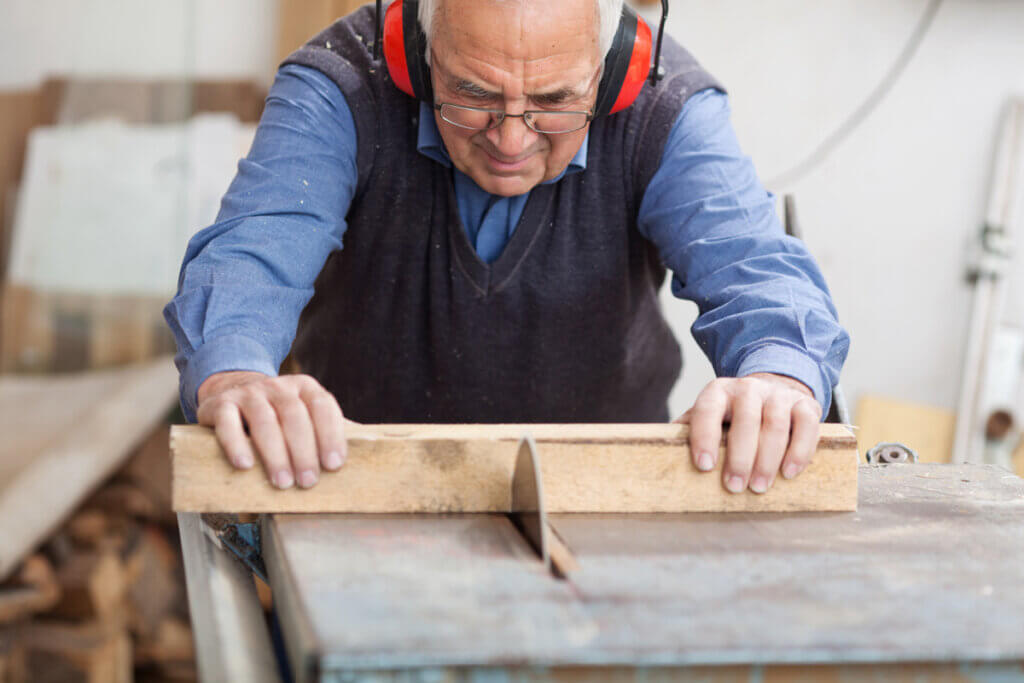
Image 1: © skatzenberger / stock.adobe.com | Image 2: © zeralein / stock.adobe.com | Image 3: © contrastwerkstatt / stock.adobe.com

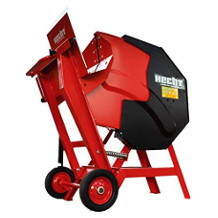
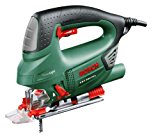
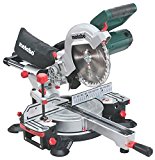
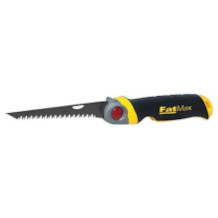
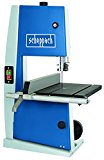
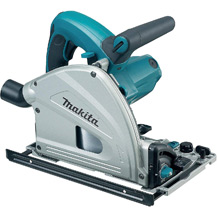
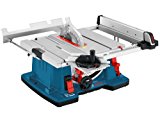
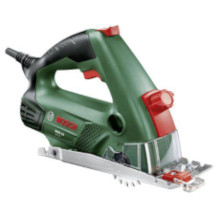
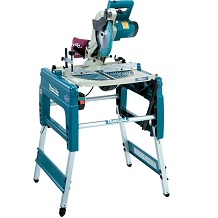
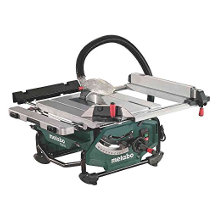
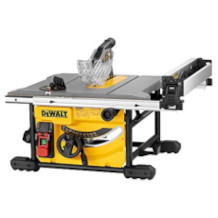
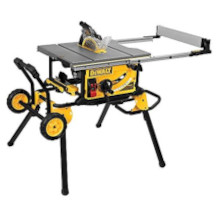
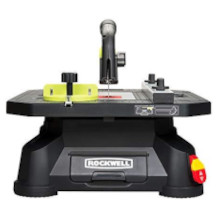
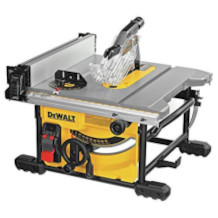
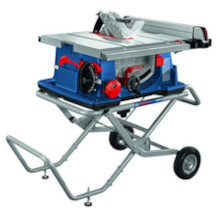
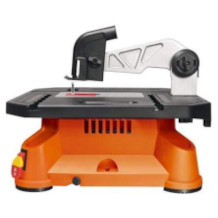

 114 reviews
114 reviews
